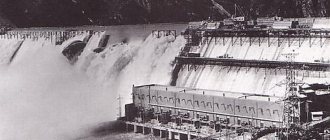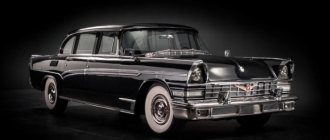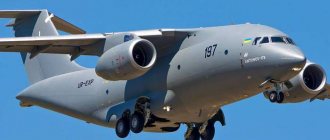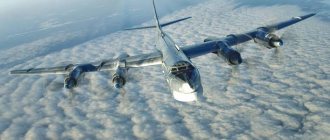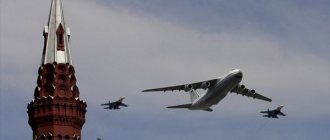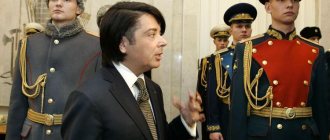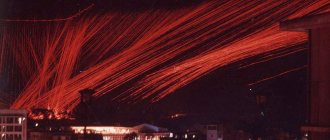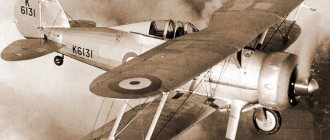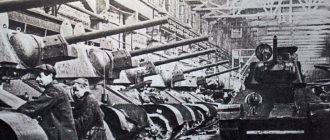It was the third month of the military conflict between Japan and the USSR on the Khalkhin Gol River in 1939. A group of Japanese Air Force Ki-27 fighters patrolled the border strip. They spotted I-15 fighters moving from the Soviet side. Knowing the advantages in speed and maneuverability, the samurai rushed to intercept. The Russians tried to break away, but there was no chance.
It seemed that victory was in the hands of the enemy. Unexpectedly, the Soviet fighters, having performed a graceful maneuver, attacked on a collision course. In a matter of moments, 4 Japanese planes were shot down. Thus began the combat journey of the I-153 Chaika fighter.
Project history
In the mid-30s of the last century, Soviet aircraft designers began to realize the futility of using biplanes in fighter aircraft. The championship was confidently captured by high-speed monoplanes.
But the successful combat use of the I-15 fighter (by that time discontinued from mass production) designed by Polikarpov in the Spanish Civil War in 1936 forced a change in opinion about the use of maneuverable biplanes in combat situations. In addition to maneuverability, the I-15 had a high rate of climb (5 km in 8 seconds) and a record flight ceiling (14,575 meters - achieved in 1936 by Vladimir Kokkinaki).
The main disadvantages were:
- speed that does not meet the requirements of modern air combat;
- lack of pilot protection (armored back);
- fixed landing gear.
Polikarpov was instructed to modify the design taking into account the requirements of customers from the army (changing the profile of the wing, hood, weapons). As a result of the changes, the I-15bis aircraft was born. In appearance it resembled the original I-15 (only the hood and wing profile changed).
Due to the new MV-25V engine, the weight increased by 200 kg (total weight 1650 kg), but it allowed the vehicle to accelerate to 380 km/h at an altitude of 3500 meters, the bomb load increased four times (from 40 to 165 kilograms), the appearance of armored back. For its time (late 1937), the machine fully met the basic requirements and was reliable, but Polikarpov sought to improve the fighter’s flight qualities.
The Air Force leadership was offered options for consideration (with a straight center section and a wing profile in the form of a Latin V - “seagull”). A little later, on November 11, the second option was approved, and on December 9, the construction of the I-153 “Chaika” aircraft was officially confirmed. The title reflects the main aspects:
- third version of the serial I-15;
- characteristic profile of the upper plane.
During development, the designers of the Polikarpov Design Bureau sought to make the fighter as light as possible and re-equip it for modern air combat. The oxygen equipment was made removable, and the outdated PV-1 machine guns were replaced with high-speed ShKAS guns.
The chassis (retractable) developed by D. Tomashevich allowed it to reach a speed of 430 km/h.
The project was planned to be implemented within six months. Construction was delayed unplannedly due to the workload of aircraft factory No. 1 with the production of the serial I-15bis. The drawings were ready in May, but the first vehicle was tested only in August 1938. The new aircraft did not pass tests. The main defects were the weak rigidity of the wings, and the ailerons and tail unit vibrated.
There were numerous minor flaws. They were eliminated on the next model (serial number 6005). The design of the elevators and propeller-motor group were revised; in order to increase combat survivability, the fuel tank became protected (this was ensured by a rubber layer that sealed holes from bullets and shrapnel).
In December 1938, a prototype was sent for testing to Baku. The aircraft carried out 450 flights. The main indicators have been established:
- maximum speed - 424 km/h (at an altitude of 3500 m);
- maximum ceiling - 8700 m;
- time to climb to 5000 meters - 6.4 m;
- turn execution time - 11 s.
Not the highest figures. The commission noted this.
On the fourth model (M-62 engine), speed indicators increased to 440 km/h, the maximum altitude was up to 9800 meters, but the turn was performed more slowly - 13.5 s.
The results were considered unsatisfactory, but the project was already in mass production. Defects were eliminated during assembly. New propellers were tried, as well as the M-63 engine with a power of 1100 hp.
The car went into production in the late autumn of 1939. In January 1940, the next tests began in winter mode, on skis instead of chassis. The speed remained the same and there were no structural prospects for increasing it at that time.
During piloting, problems emerged with recovering from a spin. In the special instructions for the I-153, pilots were prohibited from using this aerobatic maneuver for training. In 1939, 1011 “gulls” were produced, in 1940 - 2362, and in 1941, the last 64 cars. In total, Soviet industry produced 3,437 aircraft.
To whom - speed, to whom - maneuver
Nikolai Polikarpov began working on the project of a new biplane fighter, more precisely, a sesquiplane (a type of aircraft in which the area and length of the lower wing is significantly smaller than the upper one). The Red Army needed new, more modern vehicles, and the Polikarpov Design Bureau began developing two models at once. One of them was a high-speed monoplane and later received the designation I-16. The second was a sesquiplane, which was to become the I-15.
The simultaneous creation of two machines so different in their capabilities may seem strange. But the Soviet concept of air warfare assumed that the best results in air battles would be achieved by the joint use of high-speed monoplanes and maneuverable biplanes. The first tied the enemy into battle in anticipation of the second, who achieved victory due to their advantage in battles on turns. Biplanes had the shortest maneuver time and could almost hover in the air at a speed that could be even lower than landing speed. This ability of the I-15 was successfully used by experienced pilots during the Great Patriotic War. Realizing that in horizontal flight they could not compete with the same Messerschmitts, the Soviet pilots slowed down the speed of their vehicles to a minimum, and the enemy often jumped forward, after which our fighters opened fire from an advantageous position.
In 1932, of course, no one had yet thought about such tactics. The army simply demanded new aircraft, maneuverable and fast, and Nikolai Polikarpov knew how to create them. On December 8, a wooden model of the vehicle, which had the operating index I-14, was considered at a meeting with the commander of the Red Army Air Force, Yakov Alksnis. More precisely, the discussion participants considered two cars at once that had the same index. One - a biplane - was created at the Polikarpov Design Bureau, and the second - a monoplane - was developed by aircraft designer Pavel Sukhoi. As a result, it was decided to build both based on the same tactical scheme “monoplane plus biplane”. And to avoid confusion, Polikarpov’s car was given the name I-15.
Design features and flight characteristics
The plane was a sesquiplane (unlike a classic biplane, the lower plane is inferior in length and area to the upper). The fuselage is formed by a tetrahedral frame made of metal tubes with thin walls (30KhGSA steel was used).
A truss with an engine was located in the bow, and a pair of center sections were attached in the middle for installing wings.
It was mounted on top - shaped, serving as the skeleton of a “seagull”. At the bottom there was a second center section. Both are made of duralumin.
The skeleton of the fuselage was made up of duralumin frames. The tail section with the cabin was already formed by longitudinal profiles (stringers) with fabric covering.
The planes of the rectangular wings were made of wood with a duralumin elliptical frame. The internal part was strengthened with steel struts (in technical language, ribs and spars).
In front, the wings were sewn up with plywood 1.5 mm thick. The upper wing included two-section ailerons made of “winged metal” (duralumin, due to economic problems, had not yet become the main material for most aircraft in the USSR).
The wings were connected into a box using “L”-shaped struts. The joints with the planes were covered with fairings. The rigidity of the entire structure was ensured by adjustable brace tapes, 4 for each pair of wings; the load-bearing wings were double, fastened in the central part with wooden (ash wood was used) duck clamps.
The tail unit consisted of duralumin, covered with fabric on top.
The junction of the fin with the fuselage was covered with a metal fairing, the joints were sealed with tape made of thick fabric, which was often not painted in the same volume. The landing gear became retractable. Together with the racks, it was located in niches called domes (730 mm in diameter). The wheels are standard with disc brakes (diameter - 700x150 mm), covered with spherical fairings.
The struts located in the lower part of the fuselage were equipped with a cardan assembly for release and retraction. The operation of the mechanisms was ensured by a pneumatic system. It was turned on by an air valve on the left side of the cabin. The emergency release mechanism (which was a winch with a roller on the strut of the rack pyramid) was activated by a handle on the starboard side.
The tail tubeless rubber wheel was mounted on a rotating steel spike connected to the steering wheel by springs. Depreciation is represented by an air-oil mechanism.
In winter, the chassis was replaced with skis, and a mini-ski was installed in place of the rear wheel.
Initially, M-25V engines were used. Then the M-62 (fixed pitch propeller - VPS), but in the basic configuration the M62 engine (sometimes M-63) with a variable pitch propeller (VPS) was used. The engine weighed about 500 kg, take-off power was 1000 hp.
The engine was covered with a hood; during development, the NACA variant was used (a fairing shape for aircraft piston radial engines, developed in 1927). The length was 885 mm, diameter 1425 mm.
To cool the engine, special blinds were located in the frontal part.
The 316-liter protected gas tank was separated from the engine by a fireproof partition. The pilot was not protected by such a partition.
On production models, the cabin was open, with leather trim on individual interior elements and an armored backrest. The reloading mechanisms for the upper ShKAS machine guns were brought into the cockpit; reloading of the lower pair was carried out with a special handle to the right of the pilot.
A special feature when flying at night was landing torches, since there were no headlights for landing in the dark.
KHYARNPKH YUBKHYUZHKH — SCHRN, YPNLE BYAETSN OPNVETSN, KHYARNPKH YANBEPEMYARBNBYUMKH YAUEL H YNMYARPSYZHHI KERYUREKEMSHU YOOYUPYURNB. aHOKYUMSH, "KEAEDKHMYU OYAM" YNRNPSHU ASHKYU YAOERYU MYUYUMSME BRNPNI LHPNBNI BNIMSH, - ONFYUKSI, MYUKHANKEE PNLYUMRHVEYAYU VYUARE SHRNI HYARNPHH. YaEIVYUYA LNFMN, YNMEVMN, I YANFYUKEMKHEL NRLERKHRE, VRN B YANBERYAYNL YANCHGE YAKHYNL SBKEYUKHYAE RYYNI PNLYUMRKHYNI, K YYULNKERSH-AKHOKYUMSH, AEGMYUDEFMN SYARYUPEB Y MUVYUKS BNI MS, ME YALNTSKKH NAEYAOEVHRE OPEHLSYYARBU B BNGDSUE I MUVYUKNL ANEBSHU DEYARBHI. ndMUYN, OPKHMKHLYU BN BMKHLUMKHE RFFEKSCH ONKHRKHVEYAYSCH NAYARYUMNBYS BMSRPKH YARPIUMSH B RPHDJYURSHU TSNDYUU, YAKNFMEIEEE X OPNYARN "PYUGTSPNLMNE" ONKNFEMKHE DEC B YUBHYUOPNLSHK EMMNYARKH B ShchRNR OEPKHND, EDBU KH YARNHR SOPEYURE YNMYARPSYRNPNB YYULNKERNB B NRYARYUKNYARKH MEDYUKEMNBKHDMNYARKH.bSHEYAYYUGYUMMNE, YNMEVMN FE, NRMNYAHRYA KH Y PUANRYUL YANBERYAYNTSN YNMYARPSYRNPYU mHYNKYU mHYNKYUEBHVYU ONKHYUPONBU, KH Y YANGDYUMMNLS HL YAELEYARBS HYARPEAHREKEY -AHOKYUMNB. oNVRKH BYAE YYULNKERSH SHRNTSN YAELEEYARBU, MYUVKHMYU I 1933 Ts., HLEKH YNMYARPSYZHCH BEPUMETSN YPSHKYU, BSHONKMEMSCH B BHDE "VYUIH". vKHRYUREKCH OPEDKYUTSUERYA YPIURYU KHYARNPKH EDKHMYARBEMMNTSN YAPEDH MXU "VKHYARNTSN" AHOKYUMYU - YAYULNKERYU-KHYARPEAHREK x-15AHYA
.
oEPBNMYUVYUKEMN SHRNR KHYARPEAHREKE ASHK GYUDSLUM BYAE-RUYH YYU "VYUYU", HLEK NANGMYUVEMHE x-14 X OPEDMYUGMYUVYUKYAJ OND NREVEYARBEMMSHI GBEGDNNAPUGMSHI DBHTSYUREKE BNGD SMNTSN NUKYUFDEMHЪ l-38. sFE B OPNZHEYAYAYE OPNEIRKHPNBYUMKH Y PYUANVELS "YNMYARPSYRNPYAINLS" NANGMYUVEMKHCH YYULNKERYU zhya-3 ASHKN OPHLEMEMN MNBNE MYUGBYUMKHE x-15 (RUY YUY NANGMYUVEMHE x-14 SFE "OP HFHKNYAE MU RSONKEBYAYNI LYUHME), YU B YUVEYARBE YAHKNBNI SYARYUMNBYKH BSHANP OYUK MU YULEPHYUMYAYKHI DBKHTSUREKE pYuIR-zhHYKNM SGR-1820 F3. nOSHRMSHI zhya-3 ASHK HYAOSHRYUM B ONYAKEDMKHU VHYAKYU DAYUAP 1933 Ts. b REVEMKHE YAKEDSCHYETSN, 1934 TSNDYU, YAEPKHIMNE OPNKHGBNDYARBN KHYARPEAHREKEY x-15 NYABNHKH MU DBSU LNYAYNBYAYKHU YUBKHYUGYUBNDYUU: ╧1 X ╧39. oEPBSHE LYUKHMSH NYAMYUYUKHYAE pYuIR-zHYKNMYULH, Yu Ya 1935 TsNDYu, YNTsDU "YULEPHYUMZHYU" NYABNHK OEPPLAYKHI YUBKHYULNRNPMSHI GYUBND ╧19, MU x-15 YARYUKH SYARYUMYUBKHBYUR E "PNDMSHE" DBKHTSUREKH l-25.
YaYULNKER NAKYUDYUK BEYAELYU MEOKNUHLH UYUPYYREPHYARKHYULH, NYNAEMMN LYUMEBPEMMSHLH (BPEL BHPYUFYU MU BSHYANRE 1000 L ASHKN PAINPDMSHL - 8 YAYSMD!), VRN X ASHKN SIAOEMN ONDRBEPF DEMN BN BPEL TSPYUFDUMYAYNI BNIMSH B hYAOYUMHH. pEYAOSAKHYUMYAYKHE KERVKHYKH, B KHU VHYAKE X YANBERYAYKHE DNAPNBNKEZHSH, ASHKKH DNBNKEMSH SHCHRHL AHOKYUMNL - BEDE NM NAEYAOEVKHBYUK HL OPEHLSYEYARBN B BNGDSMNL ANCH. where YAETSDU BNYEK B KHYARNPKHCH YUY NDHM XG KSVIKHU KHYARPEAHREKEY LHPYU YABNETSN OEPKHNDYU. Yakubu Opkhku, NDMUYN, Meuyinken ONGDMN, Khan, Muvkhmu I am Yaulnzn Oepbnzn, Noshrmnzn Shchygeloku, NRMNEMHA I X-15 B PNDMNL Nareyarbe Ashkn Mendmyugmyuvmshl. yaUELU YAYULNKERYU BYARPERHKYU OPNRKHBNDEIYARBHE, H OPEFDE BYAETSN - YAN YARNPNMSH mxx bbya. sRBEPFDYUKNYAE, VRN MYUKHVKHE YAUELSH "VYUIYU" BEDER Y MESYARNIVKHBNYARKH OSRKH YAYULNKERYU, GYURPSDMYER NAGNP, NYNAEMMN OPH BGKERE, ONKHYAY ZHEKKH X YAYULN OPHZHEKHBYUMKHE. lMNTSNVHYAKEMMSHE ONOSHRYKH ONKHYUPONBU I ONLNYECH OPNDSBYKH YYULNKERYU B YUSCHPNDKHMYULKHVEYAYNI RPSAE, YU RUYFE OSREL MEONYAPEDYARBEMMSHU DELNMYARPUZHKHI B ONKERE DNYUGYURE MENANYAMNBYUMM NYARE RYUKHU SRBEPFDEMKHI MH Y VELS ME OPHBEKH.
bNYPSTS LYUKHMSH YANGDUBUKYUYAE MEGDNPNBYU YURLNYATEPU, YNRNPNI, Y YANFYUKEMKHCH, YAONYANAYARBNBUKH KH DETEIRSH, K MEYUVEYARBEMMNE OPNHGBNDYARBEMMNE HYAONKMEMHE. b YNMZHE YNMZHNB, YAEPHIMSHI BSHOSYAY x-15 B 1935 Ts. ASHK OPEYPYUYEM, YU YAYULNLS mKHYNKYUCH mHYNKYUEBHVS ASHKN OPEDKNFEMN YNPEMMSHL NAPUGNL SKSVKHRE YAYULNKER, BBEYARKH B YAUELS LYUKHMSH MNBSHI (“MNPLYUKEMSHI”) ZHEMRPNOKYUM, YNKKEIRNP KH ONDNTSPEB BNGDSUYU DK DBKHTSUREK, YYUNR NACA, GUIPSHRSCH YUAHMS X LMNTsNE DPSTSNE. yNMYARPSYRNP ONYEK MU MEINRNPSHE SYARSOIKH X YANGDUK YAYULNKER, ONKSVKHBKHI NANGMYUVEMHE x-15AHYA. NDMUYN, MNBYU LYUHMY GULERMN “ONRFEKEKYU” KH OPH NAKERE B YNMZHE 1935 Ts. ONKHYUPONB ONOSHRYUKYA NAKETSVHRE YNMYARPSYZHCH. RYU ONЪBHKYUYAE MNBYU LNDKHTHYUZHKH LYUKHMSH, MYUGBYUMMYU x-152 (╧3392). ShRN ASHK VKHYARSHI AHOKYUM, BREAD (NOЪRE!) YNKEZHN rYUSMEMDU BNYPSTS DBKHTSUREK I YNPNRYKHLH OYURPSAYULH. x-152 ASHK RЪFEKEE YAEPKHIMNTSN x-15 BYAETSN MU 40 YTS X, YUGYUKNYAE, LNTs YARYURE YNLOPNLHYAYANL LEFDS YNMYARPSYRNPNL X GYUYUGVHYNL. hLE YABNE BKhDEMKHE KHYARPEAHREK, onKKHYUPONB OND DYUBKEMHEL bbya BSHMSFDEM ASHK BYAE-RUYKH SYARSOKHRE KHL DN YNMZHYU.
x-15AHYA (x-152), ONDTSNRNBKEMMSHI Y YAEPKHIMNLS BSHOSYAYS NYAMECH 1937 Ts., ASHK KHLEMMN RUYKHL, YUYKHL ETSN FEKYUKH BHDERE BNEMMSHE. hLEMMN RUYHL HGBEYAREM NM X MYUL. x UNRЪ B RN BPEL ONKKHYUPONBSHL ASHK ONDTSNRNBKEM X DUFE SRBEPFDEM YNLYUMDNBYUMHEL bbya (B NYRYAPE 1937 Ts.) OPNEYR MNBNTSN YAYULNKERYU x-153, KHLEMMN x-15AHYA ASHK G YOOSYEM B YPSOMNYAEPKHIMNE OPNHGBNDYARBN. YaEIVYUYA LNFMN RNKAIN SDHBKЪREYA, MN B 1938-39 CC. B yayaap ANKENNI YAEPHEI BSHOSYAYUKYA KHYARPEAHREKE I LYUYAHLYUKEMNI YAYNPNYARECH ONKERYU 370 YL/VYUYA. dN LNLEMRYU OPEYYYYEMH YAEPKHIMNTSN BSHOSYAYU GYUBND ╧1 - NDHM XG YPSOMEIHU YANBERYAYKHU YUBHYUGYUBNDNB - KhGTSNRNBHK 2408 HYARPEAHREKEY x-15AHYA. b 1939 C. SCHRN OPEDOPHYRKHE YARYUKN BSHOSYAYURE KHYARPEAHREKH x-153, KHLEBKHE LYUYAKHLYUKEMSC YAYNPNYARE ONKERYU MU BSHYANRE 4600 L - 443 YL/VYUYA.
MEYALNRP MU RN, VRN x-15AHYA NYUGYUKYA ЪBMN SYARYUPEBHL SFE Y MYUVYUKS YABNETSN OPNKHGBNDYARBU, YAYULNKER SHRNR ЪBKЪKYA SVYYARMKHYNL OЪRKH PUGKKHVMSHU B NIM. bNIYAYNBSHE HYAOSHRYUMH "AHYU" OPNBNDHKH KERVHYH, ONASHBYUBHHE B hYAOYUMHH - NMH B ZHEKNL MEOKNUN NRGSHBYUKHYAE ON HYAOSHRSHBYUELNL NAZEIRE. UNRЪ BPEL BKHPYUFYU - TSKYUBMNTSN DNYARNKHMYARBU x-15 - ONBSHIAHKNYAE I 8 DAYS 11-12 YAYSMD, LYUKHMYU YARUKYU ANKEE SYARNIVKHBNI B KCHANI ONKERMNI YNMTHTSSPYUZHHH. schRN SKSVIUKN B ANCH OPHZHEKKHBYUMKHE X BEDEKHE NTSM. YAYNPN YANYARNKNYAE X ANEBNE YPEYEMHE.
x-15AHYA ASHKH NROPYUBKEMSH B yKHRYUI B VHYAKE DPSTSNI YANBERYAYNI ANEBNI REUMKHYKH I ZHEKECH NYUGYUMKH ONLNYH YKHRYYYINLS MYUPNDS B ANPEAE I ЪONMZHYULH. schRKH YAYULNKERSH OPHLEMKHYAE RYUL YANBLEYARMN I x-16 — YANTSKYUYAMN RYURKHYE BGYUHLNDEIYARBKH LYUMEBPEMMSHU X YAYNPNYARMSHU HYARPEAHREKEY. nVEME YAYNPN NAE LYUHMSH ONKSVHKH YHRYYYAYHE OPNGBKHYU: x-15AHYA YARYUK MYUGSHBUREYA “VHF”, x-16 - “KYUYARNVIU”. TsKYUBMSHL NPSFHEL "KYUYARNVEY" ASHKYU YAYNPNYARE, MN X LYUMEBPEMMSHE "VHFH" KERYUKH ASHYARPEE ANKEHMYARBU ЪONMYAYKHU YAYULNKERNB. NYAMNBMNI OPNRKHBMKHY MYUKHU "ORKHZ" - KHYARPEAHREKE AHOKYUM x-95 (yX.10) - SYARSOYUK EYH B LYUMEBPEMMNYARKH, KH B YAYNPNONDZELMNYARKH. VRN SF ASHKN TsNBNPKhRE OPN ANLAYUPDHPNBYKHYKH! NYYUGYUKYA SJGBHL DK NTsM VERSHPEU OSKELERNB "VHFYU" GYYSOKEMMSHI ЪONMZHYULH B khRYUKHH DBSULRNPMSHI ANLAYUPDHPNBYKHY BR-20 "YuHYAR".
bRNPYU BNIMYU DK K x-15AHYA - B lNMTsNKKHH BEYAMNI-KERNL 1939 Ts., ANKEE KHGBEYARMYU OND YPURYHL MYUGBYUMHEL uYUKUKHM-tsNK. onЪBKEMKHE S ЪONMZHEB YN BPELEMKH SCHRNTSN YNMTKHYRYU YPNLE PUMEE KHGBEYARMSHU KHYARPEAHREKEY x-96 (yu5l) MNBSHU, x-97 (yH.27), NTsPYUMHVHKN ANEBSHE BNGLNFMNYARH x-15AHYA - NM SYARSOYUK SHCHRHL YAYULNKERYUL B YAYNPNYARKH. bOPNVEL, X YANBERYAYU YARNPNMY ASHKYU OPEDYARYUBKEMYU MNBKHMYULH: HYARPEAHREKEL x-153 “vYUIYU” X OSEVMSHL x-16.
yPNLE lNMTsNKKH "AHYASH" ASHKH NROPYUBKEMSH B hYAOYUMKHCH (20 SHYGELOKPNB), TsDE NYUGYUKKHYAE MU TSPUMH NYNMVYUMKH ANEBSHU DEYARBKHI. vYuYARE NYARYUBKHYA B hyAOYUMHH YYULNKERNB, YAPEDH YNRNPSHU ASHKKH "AKHYASH", ONYAKE ONPUFEMHY PEYAOSAKHYUMZHEB BNKYU B YANYARYUB YUBHYUZHHH TPYUMYKHYARNB.
yaKSFHKH B VSFHU bbya X EYE ORE HYARPEAHREKEY x-15AHYA. bN BPEL "GHLMEI" BNIMSH I tKHMKЪMDKHEI 1939-40 TsTs., YUY KH BN BYAYKHU ANEBSHU - DEYARBKHU, ASHBUKH YAKSVYUKH BSHMSFDEMMSHU ONYUDNY. x-15AHYA, BREAD MESAHPUCHYEEYUYAYAH (GHLNI - KSHFKH), ME LNTs OPHGELKHREYA MU APCHUN, ONSHRNLS B YAKSVYUE ONYYUDYKH GYU KKHMKHEI TPNMRYU VYUYARN NYARYUBYUKYA MEBPEDH LSL. RYU THMMYUL DNYARYUKHYAE B PUGMNE BPEL OJRE "AKHYANB", YNRNPSHE BNKKH B YANYARYUB THMYAYKHU bbya, TsDE HYAONKEGNBUKHYAE B NYAMNBMNL DK RPEMKHPNBYKH KERMNTSN YANYARYUBYU. rPH YAYULNKERYU KH YANYARYUBYU SHRNI OPNDNKFYUKH OPNDNKFYUKH YABNH ONKERSH DN MYVYUKYU 1945TS. NYAMNBMYU FE LYUYAYU HYARPEAHREKEY x-15
AHYA MYUNDHKYUYAE Y MYUVYUKS BEKKHYNI nREVEYARBEMMNI BNIMSH MU BNNPSFEMHH YANBERYAIKHU bbya. YaYULNKER YAVHRYUKYA SYARYUPEBHL, ONSHRNLS ANEBNE OPHLEMEMKHE ETSN YASFYUKNYAE, YUY OPYUBKHKN, DN BEDEMHЪ RSPLNBSHU DEYARBKHI. anLANBYU MYUTSPSGYU ASHKYU MEANKENNI - DN 150 YTS, ONSHRNLS UYUPYYREPMNI ASHKYU SYARYUMNBYU YARYUMDUPRMSHU MUOPYUBKYCHYKHU DK 82-LL PEYURKHBMSHU YAMYUPDNB - PC. b DEYARBSCHYEI YUPLXX x-15AHYA MYUNDHKHYAE DN YNMZHYU 1942 Ts., ONYAKE VETSN KHU MYUVYUKH OEPEDYUBURE B SVEAMSHE ONDPYUGDEKEMKH. dN YNMZHYU BNIMSH SHCHRH YAYULNKERSH NYARYUBYUKHYAE MU BNNPSFEMHH RNKEIN MU DYUKEMEL bNYARNYE, TsDE MEYAKH YAYNPEE LHYAYAKHCH YADEPFHBYUMKH, VEL PEYUKEMNI ANEBNI YAHKSH. yaPEDH LNDHTHYUZHHI X NOSHRMSHU PUANR ON x-15AHYA MYUHKSVIKHU PEGSKERYURNB NFKHDUKH NR LYUHM I TSEPLNYYUAKHMNI X RSPAINLOPEYANPYULH r-1. dK BNIYAYNBSHU HYAOSHRYUMKHI OPEDONKYUTSYUKYUYAE DUFE YAEPH (BOPNVEL, ME YANYARNBIYUYAJ) RYUHU YYULNKERNB.
b 1938 Ts .
. nAKYUDYUBKHI RELH FE KERMSHLH UYUPYUREPHYARKHYULH, VRN X NASHVMSHI x-15AHYA (VRN ASHKN ONDRBEPFDEMN NAKERSHBYUBKHLH ETSN KERVHYULH, B VYYARMNYARH: yaRETYUMNBSHL, mHYNKYUB SHL, ySASHYHMSHL), YAYULNKER ASHK KHDEYUKEMSHL KERYUCHIHL YAREMDNL DK ASDSYKH KERVKHYNB-HYARPEAHREKEY. YaEPKHIMSHI BSHOSYAY dhr OKYUMKHPNBYUKYA MU ONDLNYAYNBMNL GYUBNDE ╧207 - ASHBYEL "dKHPFUAKEYARPNE", NDMUYN, ONYU BEKKHYAE ONDTSNRNBHREKEMSHE PUANRSH, ASHKN PEYUKHGNBUMN OPYUBHREKEYARBEMMNE PEYEMKHE N BSHOSYAYE MU SHRNL GYUBNDE ANLAYUPKHPPNBYKHYU YAS-2, OEPBNMYUVYUKEMN KHGBEYARMNTSN YUY YAG-3 (YARYUKHMAYNE GYUDYUMKHE - 3). rYYHL NAPUGNL, dhr B YAEPHCH ME ONJEK. MUHANKEE SHYGNRHVEYAYHL SCHOKHGNDNL B KHYARNPKHH x-15AHYA YAKEDSER, MYUBEPMNE, MYUGBURE HYAOSHRYUMKHE MU MEL DBSU OPILNRNVMSHU BNGDSMN-PEYUYRKHBMSHU DBKHTSYUREKEY (obpd ) YNMYARPSYZHH x.yu.lePYSKNBU. oPNBEK RÜYHE HYAOSHRYUMH GHLNI 1939 Ts. KERVHY-HYAOSHRYUREKE kNTsKHMNB OPILN MYUD REPPHRNPKHEI ZHEMRPYUKEMNTSN lNYAYNBYAYNTSN YUSCHPNDPNL. x UNRЪ OPKHPNYAR YAYNPNYARKH ASHK MEBEKKHY, LNFMN YAVKHRYURE, VRN x-15AHYA YARYUK NDMHL KH GYUVKHMYUREKEY YANBERYAYKH PEYURKHBMSHU ONKERNB.
yNMYARPSYZHKH x-15AHYA.
x-15AHYA OPEDYARYUBKK YANANI DUKEMEEEE PUGBHRHE YYULNKERYU x-15 X B NYAMNBMNL NRKHVYUKYA YAHKNBNI SYARYUMNBYNI, YU RUYFE BEPUMHHL YPSHKNL, YNRNPNE KHLEKN MNPLYUKEMSH AND ZHEMRPNOKYUM BLEYARN “vYUIYH”
xG-GYU HGLEMEMMNI TNPLSH BEPUMEE YPSHKN YPEOHKNYAE Y TEPLE TCHGEKKFYU OPH ONLNYH N-NAPYUGMSHU YARNEY yPSHKE KHLEKH ANKEKHI PYUGLYU KH MNBSHI OPNTHKE “Clark YH”, MN OPH SCHRNL UNPDSH X NRMNYAHREKEMYU RNKYKHMYU NYARYUKHYAE AEK KHGLEMEMKH yNMYARPSYZHKH - DEPEBBMMMYU I LERYUKKHVEYAYHLH YAHKNBSHLH SGKYULH ZHEMRPNOKYUM BEPUMETSN YPSHKYU - YKEOYUMMSHI KH DCHPYUKCHLHMKH, YAN YARYUKEMSHLH RPSAVIURSHLH KNMFEPNMYULH noEPEMKHE NRKHVYUKNYAE RNKEIN TNPLNI KH OKNYYUDECH PSK ONBNPNRYU yUPYYUYASH SCHKEPNMNB X NOPEPEMH Kommersant - YKEOYUMMSHE XG DCHPYUKCHLHMKH BYAE OKNYAYNYARKH UBNYARNBYU VYUARE NARTSKHBYUKHYAE ONKNRMNL
yuYAYAKH - YNMYANKEMNTSN RHOYU, YUY MU x-15. yLNPRKHGYURNP - LYuYAKIMN-OMEBLYURKHVEYAYKHI. YNKEYAYU - RNPLNGMSHE I LEUUMHVEYAYNI YAHYARELNI SOPIUBKEMKH RNPLNGYULH. YARNIYH YUYAYAH X YNKEYAYU GYIPSHBUKKHYAE NAREYUREKLH. мХФМХИ NAREYUREKE YARNIIKH ASHK FEYARYN YABGYUM I NAREYUREKEL YNKEYAYU X YAMHLYUKYA BLEYARE I MHL. ONKSNPKHEMRKHPSCHYHIYA UBNYARNBNI YNYARSHKE ASHK YABGYUM I OEDYUKLKH VEPEG PSKE ONBNPNRYU. gHLNI BLEYARN YNKEYA YARYUBHKH KSHFH. xU YPEOHKH PEGKHMNBSHLH YULNPRKHGYURNPYULH, PYYARFYS YNRNPSHU NTsPYUMHVKHBYUKH DBYu RPNYU.
YAKHKNBYU SYARYUMNBYU YANYARNKYU HG LNRNPYU l-25b (BSHYANRMNTSN BYUPHYUMRYU LNRNPYU l-25) X BKHMRYU THYYAKHPNBYUMMNTSN YUTSIU DHYULERPNL 2.8 LERPYU. mu MEINRNPSHU LYUHMYU SYARYUMYUBKHBYUKH RSPAINLOPEYAYANPSH. dBHTSUREKE GUYPSHBUKYA YUONRNL RHOYU ╚NACA╩ HG DCHPYUKCHLHMH. yYUONR LNMRKHPNBUKYA MU YYUPYYUYAYE, GYUPEOKEMMNL MU YPNMRKHPNBUKYA Y LNRNPS. kNANBYU VYUYARE YANYARNKYU XG RPEU VYUYAREI (BEPUMEI X DBSU ANYNBSHU), YU CHAYU - XG ORRKH VYUYAREI (BEPUMEI, DBSU ANYNBSHU X DBSU MHFMKHU). BYAE VYUYARKH YUONRYU YAYPEOKKKHYAE YARYUKEMSHLH KEMRYULH. kNANBYU VYUARE LNRNPYU GYUPSHBUKYUYAE FUKCHGH. bRSKYS BKHMRYU OPKHYPSHBUK PYUGZELMSHI DCHPYUKCHLHMHEBSHI YNY.
x-15AHYA ASHK BNNPSFEM VERSHPEL OSKELERYULH ob-1, YARPEKBHLH YAHMUPNMMN VEPEG BCMR.
OND YPSHKELH OPEDSYALYURPHBYUKYUYAE ONDBEYAYU ANLANBNTSN BNNPSFEMHЪ NAYIEI LYUYAYANI DN 150 YTS B YAKEDSCHYU BYUPKHYUMRYU: 4 U yun-10 HKH yunu-10 2 U yun-25l, 4 U yun -25l 2 U tyua-50, 2 U yun-25l + 2 U tyua -50 2 U buo-6. cru:
| lNDHTHYUZHH | x-15AHYA |
| pYUGLUU YPSHKYU, L | 10.20 |
| dKKhMYu, L | 6.28 |
| OKNYYUDE YPSHKYU, L2 | 22.50 |
| I love it, JC | |
| OSYARNTSN YYULNKERYU | 1310 |
| MNPLYUKEMYU BGKERMYU | 1730 |
| RHO DBKHTSUREK | 1 od l-25b (l-25a) |
| lnymnyare, K.Ya. | 1 U 750 (775) |
| LYUYAKHLYUKEMYYAINPNYARE, YL/V | |
| WITH GELKH | 372 |
| MU BSHIANRE | 379 |
| oPUYRHVEYAYU DUKEMNYARE, YL | 770 |
| LYUYAKHLYUKEMYYAINNONDZELMNYARE, L/LHM | 625 |
| oPUYIRKHVEYAYKHI ONRNNKNY, L | 9800 |
| schYHOYUF | 1 |
| bNNPSPHEMHE: | VERSHPE 7.62-LL OSKELERU ob-1 |
| bottom. KhMTNPLYUZHKH: |
| VEPREF "onKKHYUPONB x-15AHYA" yMKHTSYU "reUMHVEYAYNE NOKHYUMHE x-15AHYA YA LNRNPNL l-25B (YMKHTSYU 1)" yMKHTSYU "reUMHVEYAYNE NOKHYUMKHE x-15AHYA I LNRNPNL l-25B (YMH TsYu 2)" tNRNTsPYUTHH : | nOSHRMSHI x-15AHYA |
| x-15AHYA | |
| x-15AHYA | |
| x-15AHYA | |
| x-15AHYA MU KSHFMNL YUYAYAH | |
| x-15AHYA ry | |
| x-15AHYA ry | |
| x-15AHYA | |
| dhr | |
| x-15AHYA Grupo 24 BBY TPYUMYHYARNB | |
| x-15AHYA tHMYAYHU bbya | |
| YANBPELEMMYU PEOKHYU x-15AHYA | |
| YANBPELEMMYU PEOKHYU dhr | |
| oPKHANPMYU DAY x-15AHYA |
IWELSH:
| x-15AHYA |
bYUPHYUMRSH NYPYYAYH:
| nOSHRMSHI x-15AHYA, 1938 TsND |
| x-15AHYA, 13 NYUHSCH bbya yat |
| x-15AHYA ry |
| x-15AHYA XG YANYARYUBYU bbya gYuOYUDMNTSN bn, 1940 TsND |
| x-15AHYA Grupo 24 BBY TPYUMYHYARNB, 1941 TsND |
| x-15AHYA Grupo Independiente bbya PEYAOSYKHYUMZHEB |
| x-15AHYA Grupo 24 BBY TPYUMYHYARNB |
| x-15AHYA bbya yHRYU |
| x-15AHYA T-LLv 35 tHMYAYKHU bbya, 1942 TsND ╘ Pentti Perttula |
| YaOHYANY HYARNVMKHYNB: |
| lHP yuBHYUZHHH. lHUYUHK lyuYAKNB. x-15AHYA - YAYULNKER ORRKH BNIM ONKHTSNM. e.tsNPDNM, b.gEMYHM, b.rHRNB. x-5, x-15, x-15AHYA yuBKHYUZHKH bPEL. YuKEYAYUMDP yNRKYUANBYAIKHI. "vYURN" onKHYUPONBU yuBPNB b.a. KHYARNPKH YNMYARPSYZHHI YAYULNKERNB B yayap 1938-1950 CC. YaKHLYINB a.k. YaYULNKERSH YARPIUMSH YANBERNB. 1917-1970 YaYULNKERSH YARPIUMSH YANBURNB Avions 123. Mikhail Maslov. Polikarpov I-15bis Squadron/Signal. Aircraft Number 157. Hans-Heiri Stapfer. Polikarpov Fighters in Action |
sTSNKNY MEAYU. 2004
Flight performance
Main parameters:
- sesquiplane;
- crew - 1 pilot;
- length - 6275 cm;
- height - 3425 cm;
- wingspan: upper - 10 m, lower - 7.5 m;
- weight without weapons and additional equipment - 1348 kg;
- take-off weight with maximum configuration - 1859 kg;
- fuel tank volume - 316 liters;
- Maximum speed - 431 km/h;
- flight range - 740 km;
- flight ceiling 11,000 meters;
- climb speed 15 m/s;
- armament: 4 ShKAS machine guns (experimental versions with a ShVAK cannon and two machine guns, TKB machine guns - future BS), up to 200 kg of bomb load and guides for 8 RS-82 unguided rockets.
Options [edit]
| In this section do not cite any sources . |
Play media
Polikarpov I-15bis in flight
TsKB-3bis Prototype.
TsKB-3ter The prototype is equipped with a more powerful M-25V radial piston engine. I-15 First production series. I-15bis Single-seat biplane fighter armed with four 7.62 mm (0.30 in) PV-1 or ShKAS machine guns and up to 150 kg (330 lb) of bombs. The I-15bis was equipped with a more powerful Shvetsov M-25 V. 570 kW (760 hp) radial piston engine. It had a straight upper wing. A total of 2,408 vehicles were built. I-152 Modernized version of I-15bis. One was built in 1938. There was no serial production, since it was decided to build the I-153. I-152GK ( Sealed Cabin
- Pressurized (pressurized) cabin) - one aircraft with a pressurized cabin.
I-152TK (Turbo Kompressor - turbocharging) - one aircraft with two turbochargers. I-15ter (I-153) Development of the I-15 with retractable landing gear, see Polikarpov I-153. IMP-1 ( Oochebno Training Istrebitel
- training fighter) -
factory-built two-seat trainer version, forward cockpit
, dual controls installed, 20 built in 1934, but not used by the Air Force
Modifications
The Seagull was used a lot as an experimental aircraft, accordingly. Starting from flight ceiling records and ending with the use of jet engines (the I-153 ramjet engine was tested in 1939, frightening the residents of Moscow and alarming firefighters with fiery jets in the sky).
The main modifications remaining in historical documents:
- I-153P (cannon) with two synchronized ShVAK cannons;
- I-153V (high-altitude) or GK. With a pressurized cabin designed by A.Ya. Shcherbakov;
- I-153 TK (2 turbochargers in the engine);
- I-153 Ud (with a completely wooden rear fuselage with a closed cockpit, the so-called monocoque).
Options with skis are not considered official modifications.
Naughty "seagull"
The creation of the I-15 fighter required Nikolai Polikarpov and his employees to solve two opposing problems. On the one hand, military pilots demanded a maneuverable biplane fighter, and on the other, they saw it as fast. To achieve this, the designers had to use many technical tricks. First of all, they gave the upper wing a “gull” profile: the plane seemed to break over the fuselage, giving the aircraft a characteristic appearance. This design made it possible not only to reduce air resistance in flight, that is, to increase speed. It gave the pilot better visibility forward and upward, which is very important for an aircraft designed for maneuverable air combat.
The new fighter was designed for a new engine, which was also supposed to provide it with the necessary high speed in flight. It was the M-25, a licensed version of the American Wright-Cyclone engine. It was produced by a plant built in Perm: the enterprise was entirely purchased in the USA, and the first engines were assembled from American parts. But the design of the I-15 went faster than the negotiations on the purchase of the engine plant, and therefore the first flight and then production copies received less powerful, but available in sufficient quantities, M-22 engines.
The I-15 took off on its first flight on October 23, 1933. Such a high pace of construction did not surprise anyone. Nikolai Polikarpov tried to use in the design of the new aircraft well-developed structural elements and technological techniques that had been tested on his previous aircraft. This provided the opportunity to quickly assemble prototypes of the fighter, and then reduce the time for its development in mass production. But they also built an increased “margin of obsolescence” into the new car, since they relied on technologies that were already becoming a thing of the past.
The first prototype of the new aircraft had been flying for almost two months when, on December 18, participants in the plenum of the USSR Revolutionary Military Council, gathered in Moscow, wanted to see it. That day the flight ended in disaster. To take off from a snowy airfield, the I-15 was mounted on skis, and in flight one of them fell off the brace and turned across. It took all the flying skill of Valery Chkalov to still be able to land in such a situation, but the plane still turned over and crashed, although the pilot himself was not injured. Fortunately, such emergencies were not something exceptional, and the incident did not affect the overall impression of the aircraft, which the audience liked.
Combat use
The Seagull's baptism of fire took place in battles with Japanese fighters at Khalkhin Gol in 1939 (20 aircraft). But even then the fighter was inferior in speed to the new monoplanes. Used in groups with I-16. The I-153 actively participated in winter combat operations in China in the same year of 1939.
"Chaika" also took part in the Soviet-Finnish war in the winter of 1939 - 1940s. During the battles, several damaged and faulty fighters went to the Finnish army, where they were in service until the end of World War II (most sources agree on the number of 5 aircraft). They were mainly used as reconnaissance aircraft with the coloring and insignia of the USSR Air Force.
By the beginning of the Great Patriotic War, the I-153 was significantly inferior to its main rival, the German-made Bf-109 (the same Messer had a speed of over 500 km/h, but in its early modifications it was inferior in horizontal maneuverability at altitudes below 3000 meters).
Another fighter from Europe, the Dutch Fokker D.XXI (a monoplane comparable in flight and technical characteristics) actively opposed the Seagulls in the Soviet-Finnish War of 1940 in the Finnish Air Force, but lost in all respects.
The Italian CR-42 biplane was also inferior to the Seagull in all respects, but served well until the end of World War II as part of the Italian Air Force.
In the first months of the Great Patriotic War, maneuverable biplanes with a characteristic wing geometry were a serious deterrent to the more modern Nazi aircraft.
Famous Soviet pilots fought on the “gulls”: Rechkalov A.G., Klubov A.F., Talalikhin V.V. (on the Seagull he made 47 combat missions and won 4 victories) and many others.
The losses of aircraft of this design at the beginning of the war were no greater than those of more modern ones, which served as a reason for proposals to resume mass production. But they (quite rightly) did not receive support.
Subsequently, the I-153 was actively used as an attack aircraft (reorientation was carried out already in the pre-war years. In connection with the development of the line of monoplane fighters.), thanks to its maneuverability at medium altitudes and additional weapons in the form of RS and a bomb load. Currently, there are several replicas of the I-153 that regularly take part in air shows.
Fighter
One of the ways to increase flight altitude, along with improving other characteristics of aircraft, was pressurized cabins. The first Soviet fighters equipped with pressurized cabins were the I-15 and I-15bis. Nikolai Polikarpov was personally interested in this problem, so his team paid a lot of attention to high-rise topics. Structurally, the pressurized cabins of the Polikarpov Design Bureau were soft shells made of rubberized fabric with reinforcements in the form of a metal frame. At the end of July 1939, by government decree, Polikarpov's design bureau was given the task of equipping one of the serial I-153 fighters with a pressurized cabin while simultaneously installing turbochargers (TC) on the aircraft to increase flight altitude.
Alexander Shcherbakov received production space at aircraft plant No. 289 near Moscow, where by mid-1940 the bulk of the work was completed (turbochargers were not installed at this stage). In July 1940, the converted Chaika (serial No. 6034) was presented for state tests. Almost without changing the design of the aircraft, a pressurized cabin was installed into it, allowing flights at altitudes of more than 4 kilometers without oxygen equipment and special equipment for pilots - thick warm overalls that restrict movement.
Structurally, the cabin was made in the form of a welded metal “cocoon” in the shape and size of the figure of a seated pilot. The upper folding part was a hemisphere in the form of a steel frame with a duralumin shell and portholes cut into it. The necessary living conditions in the cabin were maintained with oxygen supplied from a 4-liter cylinder. Oxygen entered the cabin in an amount of 3-4 liters per minute and was mixed with air, which, in turn, passed through special regenerating cartridges. The latter acted as carbon dioxide absorbers. The air mixture purified in this way entered the front part of the cabin in an amount of 50-55 liters per minute. Inside, a constant excess pressure of 0.2 atmospheres and a temperature of about 10°C were maintained.
The aircraft was tested from July 20 to July 30, 1940. The pilots, including Hero of the Soviet Union Stepan Suprun, noted that the flight qualities of the I-153 remained virtually unchanged. The stability of the machine, despite the centering being shifted back by more than 2%, remained the same. Due to the installation of the PAN-22 sight in a special casing, forward visibility has deteriorated, but backward visibility has become better, especially since it is incomparably easier to wrap up in a light overalls than in thick winter clothing.
A total of 11 flights were carried out, 9 of them to the maximum altitude - more than 10 kilometers. The training battles conducted with I-16 and standard I-153 were rather a tribute to traditional types of tests, since it was almost impossible to identify any features other than the slight deterioration in visibility already mentioned above in such a short period of time. But all the pilots noted little noise in the cockpit and no fatigue after flying in a rarefied atmosphere.
Although, based on the test results, it was recommended to produce a small number of “Chaikas” with a pressurized cabin to gain operational experience, the series did not follow and, according to available data, I-153 No. 6034 remained in a single copy.
Links[edit]
Notes[edit]
- ^ ab "Polikarpov's fighters". wio.ru.
Access date: October 8, 2012. - ^ a b c d Gunston 1995, p. 299.
- ^ abc Green and Swanborough 1979, p. 10.
- Lannon 2002, p. 46.
- Green and Swanborough 1979, p. 9.
- Gordon and Dexter 1999, p. 120.
- Green and Swanborough 1979, p. 18.
- Jump up
↑ Cheung, 2015, pp. 76, 80-81. Hsu Chi-hsiang (徐吉驤-Xu Jixiang) was shot down in his I-15bis in the debut dogfight of an A6M Zero on September 13, 1940... A 20mm shell went through his first aid kit, sweeping all the bristles off his toothbrush. ... Xu took revenge on March 4, 1944 over the Japanese air base at Chiung Shan (Qiongshan) on Hainan Island ... shot down the lead three-man Zero ... flight commander or possibly instructor - 蔡, 乔治. "九一三壁山空戰". www.flyingtiger-cacw.com
. Source 2021-01-23多,如此之下,如何還能奢談 "取勝"? 在戰鬥中,徐吉驤的座機被莫名日機連續咬尾多次遭受了十幾次攻擊,已經被,敵機射彈密集座機上連細細的吉驤感到自己四周的防彈子彈敲得叮叮,的中彈。最後伊 -152在璧山上空停車。徐吉驤了一下形勢,決定不跳傘以免兇殘的日機沖傘的日機攻擊後七零八落The日後才爬出完全損壞座機 - ↑
Maslov, 2010, p. 33. - Jump up
↑ Cheung, 2015, pp. 74-75. Lieutenant Gao fired A6M Zeroes into the tails of other Chinese fighters in a melee over Chongqing on September 13, 1940, closing to within 160 feet of one...claiming one shot down... - Chen, S. Peter. "Gao Yuxin". WW2DB
. Retrieved November 27, 2022. <In September 1940 (09/13/1940) Lieutenant Gao Yuxin flew against the new A6M Zero fighters, damaging one... he was victorious, but no A6M fighters were lost in this battle. - 萨沙, 资深中国近代军事历史作家 (05/09/2019). "永不归航的红色年轻战鹰:1位"八路军 "青年战士的抗日空战" .知乎专栏
(in Chinese). Retrieved December 21, 2022. <郑少愚在战中第五次受伤,他的右手和左足均中弹负伤,座机被击成重伤。 1940年 9 月 13 日)中记载: “总领队郑大队长虽手足均受弹伤,但奋勇,援救友机多架掩护各飞返遂宁。 - ↑
Maslov, 2010, p. 42. - ↑
Maslov, 2010, p. 16. - ^ a b Maslov 2010, p. 18.
- ↑
Maslov, 2010, p. 17. - ↑
Maslov, 2010, p. 21. - ↑
Maslov, 2010, p. 24. - Green and Swanborough 1979, p. 12.
- Gladniker, David. "An Incomplete Guide to Using an Airfoil". m-selig.ae.illinois.edu
. Retrieved April 16, 2022.
Bibliography[edit]
- Abanshin, Mikhail E. and Nina Gut. Polikarpov Fights, Eagles of the East No. 2
. Lynnwood, WA: Aviation International, 1994. ISBN 1-884909-01-9. - Cheung, Raymond. OSPREY AIRCRAFT OF THE ACES 126: Aces of the Republic of China Air Force
. Oxford: Bloomsbury Publishing Plc, 2015. ISBN 978 14728 05614. - Drabkin, Artem. Red Aviation at War: Barbarossa and the Retreat to Moscow - Memoirs of Fighter Pilots on the Eastern Front
. Barnsley, South Yorkshire, UK: Pen & Sword Military, 2007. ISBN 1-84415-563-3. - Gordon, Efim and A. Dexter. "Variants of the Polikarpov biplane fighter." Wings of Glory
, volume 17. London: Aerospace Publishing, 1999, pp. 106–129. ISBN 1-86184-041-1. - Gordon, Efim and Kate Dexter. Polikarpov biplane fighters
(Red Star, vol. 6). Earl Shilton, Leicester, UK: Midland Publishing, 2002. ISBN 1-85780-141-5. - Gordon, Efim and Dmitry Khazanov. Soviet Combat Aircraft of World War II, Volume One: Single-Engine Fighters
. Earl Shilton, Leicester, UK: Midland Publishing Ltd., 1998. ISBN 1-85780-083-4. - Green, William and Gordon Swanborough. "About Chaika and Chato... Polikarpov's combat biplanes." Air enthusiast
. Issue 11, November 1979–February 1980, pp. 9–29. ISSN 0143-5450. - Gunston, Bill. Encyclopedia of Russian Aviation Osprey 1875–1995
. London: Osprey, 1995. ISBN 1-85532-405-9. - Lannon, Francis. Spanish Civil War 1936–1939 (Essential History 37)
. London: Osprey Publishing, 2002. ISBN 9781841763699. - Layuro, Patrick (May 1978). “Polikarpov I-15 “Chato”: Russian fighter in an exotic fate..., part 1” [Polkarpov I-15 “Chato”: Russian fighter in an exotic country, part 1]. Le Fana de l'Aviation
(in French) (102): 34–41. ISSN 0757-4169. - Layuro, Patrick (June 1978). “Polikarpov I-15 “Chato”: Russian fighter in an exotic fate..., part 2” [Polkarpov I-15 “Chato”: Russian fighter in an exotic country, part 2]. Le Fana de l'Aviation
(in French) (103): 42–45. ISSN 0757-4169. - Leonard, Herbert. Les avions de chasse Polikarpov
(in French). Rennes, France: Editions Ouest-France, 1981. ISBN 2-85882-322-7. - Leonard, Herbert. Les chasseurs Polikarpov
(in French). Clichy, France: Éditions Larivière, 2004. ISBN 2-914205-07-4. - Maslov, Mikhail Aleksandrovich Polikarpov I-15bis (Wydawnictwo Militaria 199)
(in Polish). Warsaw, Poland: Wydawnictwo Militaria, 2004. ISBN 83-7219-178-6. - Maslov, Mikhail Aleksandrovich Polikarpov I-15, I-16 and I-153
. Oxford, UK: Osprey Publishing, 2010. ISBN 978-1-84603-981-2. - Stapfer, Hans-Heiri. Polikarpov fighters in action, part 1 (Aircraft in action No. 157)
. Carrollton, TX: Squadron/Signal Publications, Inc., 1995. ISBN 0-89747-343-4. - (Transcript 682) Air Force heroes during World War II and their martyrdom)
. 区, 北京,中国:团结կ, 2016. ISBN 978-7-5126-4433-5.
Operators[edit]
| In this section do not cite any sources . |
Spanish Republican Air Force "Chato"
republic of china
- Chinese Nationalist Air Force
Finland
- Finnish Air Force (captured)
Nazi Germany
- Luftwaffe
(captured)
Mongolia
- Air Force of the Mongolian People's Army - in July 1939 - 1942. We received more than 40 aircraft.
Soviet Union
- Soviet Air Force
- Soviet naval aviation
Spanish Republic
- Spanish Republican Air Force
Spain
- Spanish Air Force - Post Civil War.
See also[edit]
Related development
- Polikarpova I-5
- Polikarpov I-153
Aircraft of comparable role, configuration and era
- Blériot-SPAD S.91/5
- Curtiss F11C Goshawk
- Fiat CR.32
- Fokker D.XVI
- Gauntlet of Gloucester
- Grumman F2F
- Heinkel He 51
- Nakajima A4N
Related Lists
- List of interwar military aircraft
- List of aircraft of the Spanish Republican Air Force
- List of World War II aircraft
